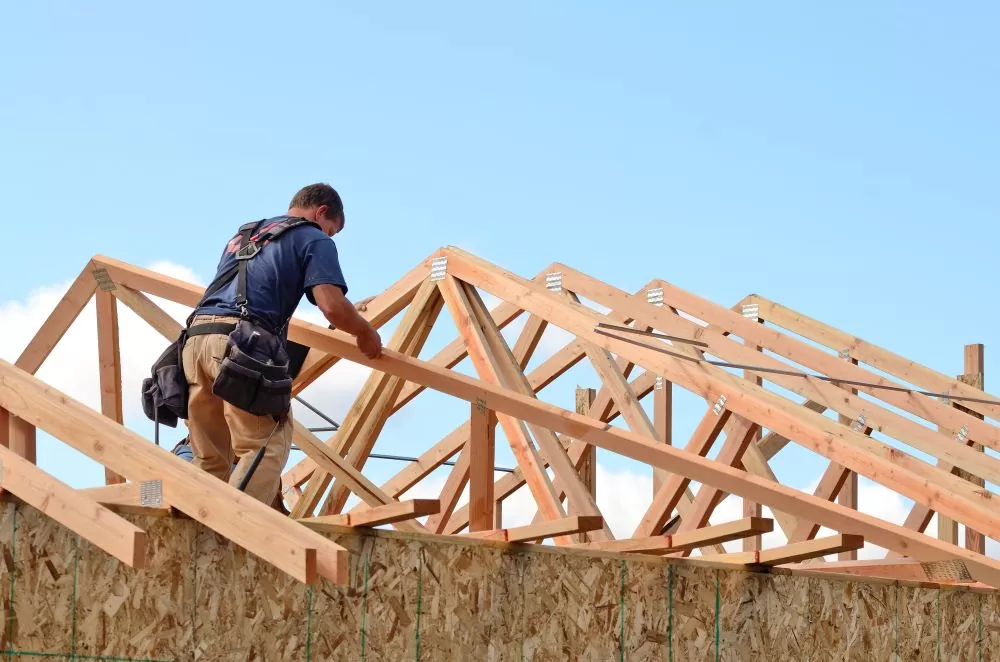When planning a building project, whether it’s a new home, a commercial building, or an extension, one of the most important decisions you’ll make is choosing the right roofing system. Roof trusses are often a top choice, and for good reason. Not only do provide structural integrity and aesthetic appeal, but they can also save you significant amounts of money in the long run. Here’s how professional roof truss manufacturers can be a cost-effective solution for your project.
Lower Material Costs
Efficient Use of Materials
One of the primary ways quality roof trusses save money is through the efficient use of materials. Unlike traditional roofing methods, which may require a range of different components such as rafters, beams, and purlins, roof trusses are pre-engineered units that require fewer materials. These trusses are designed with precision to distribute weight efficiently, which means that less material is needed compared to conventional framing methods.
Reduced Waste
Since roof trusses are factory-made to exact specifications, there’s less room for waste. This precision reduces the amount of off-cut lumber and wasted materials, ultimately lowering the overall cost of materials needed for the project.
Faster Construction Time
Pre-Fabricated and Ready to Install
Roof trusses are pre-fabricated off-site and delivered ready for installation. This cuts down on construction time, which can be one of the most expensive aspects of any building project. By reducing the labor hours required for roof installation, you can significantly decrease the overall cost of construction.
Less Labor on Site
Because roof trusses are pre-assembled, the need for skilled labor to frame the roof on-site is minimized. Roof trusses are often lighter and easier to handle compared to traditional timber framing, which means fewer workers are needed to lift and install them. This leads to a reduction in labor costs and faster project completion.
Improved Energy Efficiency
Better Insulation and Ventilation
Roof trusses create an open, spacious attic area that allows for better insulation installation. With proper insulation in place, your home or building can benefit from improved energy efficiency. Insulation reduces the need for heating and cooling, leading to lower utility bills over time.
Moreover, roof trusses allow for better ventilation design, which can help regulate temperatures and prevent heat buildup in the attic. This results in a more comfortable living space and can further reduce energy costs.
Long-Term Savings on Heating and Cooling
In addition to insulation, roof trusses provide the structural support needed for energy-efficient roofing systems, such as reflective or cool roofs. These roofing systems help to lower the amount of heat absorbed the building, reducing the demand on air conditioning during hot months, and keeping heating costs down during winter.
Increased Durability and Longevity
Strong and Resilient Construction
Roof trusses are designed to provide superior strength and stability. Because they are pre-engineered with a focus on load distribution, roof trusses are less prone to sagging, shifting, or warping over time. This means they require less maintenance and repair compared to traditional roofing systems. By investing in roof trusses, you can avoid costly repairs and replacements in the future, ultimately saving money.
Resistance to Weather Damage
Roof trusses are often designed with weather-resistant materials and techniques that help them stand up to harsh conditions such as snow, wind, or rain. This durability means that roof trusses are less likely to be damaged storms or environmental factors, leading to fewer repair costs in the long run.
Versatility and Customisation
Adaptable to Various Roof Designs
Roof trusses can be customized to suit a wide range of architectural designs, from traditional gable roofs to complex modern structures. This adaptability makes them ideal for a variety of building types, including homes, garages, and commercial buildings. The ability to use roof trusses for both standard and unique roof designs helps to avoid the need for expensive custom-built framing solutions.
Future Modifications
Because roof trusses create large, open spaces in the attic, they allow for future modifications or expansions without requiring a complete overhaul of the roof structure. This means that should you decide to add additional rooms or make changes to the building in the future, your roof will be easier and cheaper to modify.
Reduced Risk of Structural Problems
Engineered for Safety
Roof trusses are designed engineers to meet specific load requirements and are subjected to rigorous quality control measures during the manufacturing process. This ensures that the roof trusses are not only strong and reliable but also built to meet building codes and safety standards. As a result, you can reduce the risk of costly structural issues that may arise from poorly constructed or improperly supported roofs.
Minimised Risk of Structural Failures
By distributing weight evenly across the roof, trusses reduce the likelihood of sagging or collapse due to heavy snow loads, high winds, or other external pressures. This increases the longevity and safety of your building, helping you avoid the high costs associated with major repairs or rebuilding.
Lower Insurance Costs
Insurance Premium Savings
Due to their engineered strength and durability, roofs constructed with trusses can lead to lower homeowner’s insurance premiums. Insurance companies often view roof trusses as a safer and more reliable option compared to traditional roof structures. By investing in roof trusses, you can reduce your insurance costs over time.
Conclusion
While the upfront cost of roof trusses may seem slightly higher than traditional roofing methods, the long-term savings are undeniable. From reduced material costs and faster construction time to better energy efficiency and enhanced durability, roof trusses offer significant financial advantages. By choosing roof trusses for your next building project, you’ll not only create a safer and more efficient home but also enjoy substantial savings over the life of the building.

